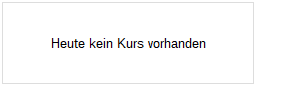Top-News

Mittwoch,
12.03.2014 08:15
von
PR Newswire
| Aufrufe: 258
KEFI MINERALS PLC - Upgraded resource at Tulu Kapi
Tageszeitungen (Symbolbild).
pixabay.com
PR Newswire
London, March 12
AIM: KEFI
12 March 2014
KEFI Minerals Plc
("KEFI" or the "Company")
UPGRADED JORC RESOURCE AT
TULU KAPI GOLD DEPOSIT IN ETHIOPIA
KEFI Minerals, the AIM-quoted gold and copper exploration and development
company with projects in the Kingdom of Saudi Arabia and the Democratic
Republic of Ethiopia, is pleased to announce an updated JORC compliant total
Indicated and Inferred Resource of 24.1Mt at 2.64g/t Au for 2.05Moz Au at its
Tulu Kapi project in Ethiopia.
KEFI Minerals is the manager of the project under the Company's 75%-owned KEFI
Minerals (Ethiopia) Limited joint venture company with Nyota Minerals.
HIGHLIGHTS
* A JORC-compliant total resource of 2,051,000oz Au (24.1Mt at 2.64g/t Au)
has now been calculated, a re-validation and an increase over the
previously reported total resource of 1,872,000oz Au, with a material
reclassification from the "Inferred" category to the "Indicated".
* The Indicated Resource now stands at 21.2Mt at 2.73g/t Au for 1,862,000oz
Au (from 1,108,000oz Au at 2.36g/t Au).
* As a result of upgrading the Indicated Resource, the Inferred category has
been reduced to 2.9Mt at 2.03g/t Au for 189,000oz Au (from 764,000oz Au at
2.30g/t Au).
* An independent review of KEFI's resource model was performed by AMC
Consultants Pty Ltd. (AMC), who advised areas to be addressed in due course
after planned further drilling and surface sampling, and during the reserve
re-estimation process.
* KEFI has been able to perform this resource upgrade by updating the
database to include a total of 71 exploration drill holes drilled by Nyota
in late 2012 which missed the cut-off for the resources estimate at October
2012 which formed the basis of the Definitive Feasibility Study (DFS)
published in December 2012. In addition, KEFI has refined the resource
model and corrected some of the down hole survey data.
* KEFI has completed its review and verification of the October 2012
JORC-compliant Inferred and Indicated resource estimate as reported by the
previous owner and has introduced tighter structural control to the model
using the present surface mapping carried out since early January 2014.
* Revisions to the DFS to conform to more selective mining of the Tulu Kapi
deposit have been initiated. The modifications aim to reduce the capital
expenditure by downsizing the plant from 2Mt pa to 1-1.2Mt pa and, reducing
the size of the mining fleet. These changes result in an increase to the
mined head grade, by reducing mine dilution.
* The revised Tulu Kapi DFS is expected to be complete in Q4 2014.
* An ambitious exploration programme will also be introduced in stages, to
ensure long term optimisation of the mineral resource and surrounding
licences.
Jeff Rayner, ManagingDirector of KEFI Minerals, commented:
"We are delighted with the increase of the Tulu Kapi JORC compliant Indicated
Resource by over 65% to 1.86Moz. We are improving our understanding of the
mineralisation through detailed structural mapping and surface sampling. Our
progress has been rapid and work continues with a small programme of infill RC
drilling for use in final mine planning, scheduled to be completed next quarter
".
"We are also delighted with the contribution of our new local personnel who are
rapidly integrating into the enlarged KEFI Minerals Group and the exciting
development tasks ahead."
Tulu Kapi Resource Update
The updated resource at Tulu Kapi has been calculated from additional drill
results received after the October 2012 resource had been published. A total of
71 exploration drillholes were added to the post-October 2012 database
comprising 25 reverse circulation holes, 44 diamond holes and 2 water-bore
holes for a total of 16,000m. The total data set now considered is comprised of
231 diamond drill holes for 58,276m and 333 RC drill holes for 45,616m, and 74
RC drill holes with diamond tails for 17,430m.
The resource methodology involves using dynamic anisotropy to generate a block
model directly from the drill hole data by using strike and dip strings to
define the orientation of the mineralised structure. The strike and dip strings
were generated from the drill hole data based on a cut-off grade of 0.3g/t Au.
Dip strings are based on the current structural interpretation in which the
mineralisation is defined by structures which dip around 30° to the northwest.
Dip strings were generated on 20m section spacing and attempted to join
intersections in which grade continuity was identified. As a review of the
structural model and part of the verification process dip strings were created
at an increased density and incorporation of the additional exploration
drilling has enabled a much tighter control to be brought to the grade
estimation process.
Geostatistical analysis was carried out on the revised database and "top
cutting" was performed to reduce the influence of any values that were outside
of the general population. Grade top-cuts were applied at 100g/t and the
overall effect of the top cuts on the Tulu Kapi dataset has not resulted in any
significant reduction in the mean grade of the deposit.
Variography was carried out on the revised database to confirm the spatial
continuity of mineralisation and to confirm the selection of suitable search
parameters upon which to base the resource estimation.
Drill data was composited at 1m, which is the mean sample length present in the
database and to preserve narrow high grade structures, after which a dynamic
anisotropy procedure is run using an inverse distance squared estimation on the
composites to identify blocks within the deposit boundaries that satisfies the
cut-off grade criteria identified in the mineralised zone interpretation. The
mineralised zone model was generated based on a prototype of 5m by 5m by 1m
block sizes.
Grade estimation was carried out using ordinary kriging (OK) as the principal
interpolation method. Inverse power of distance squared (ID2) and nearest
neighbor (NN) were also used for comparative purposes. The ordinary kriging
method used estimation parameters defined by the variography. The estimation
was performed only on mineralised material defined within the deposit
boundaries as defined by the mineralised zone model. Drill hole samples with a
grade of less than 0.3g/t Au were excluded from the input data for the
estimation process.
The estimate compares well with the previous October 2012 estimate on tonnage
and grade with the influence of the additional data, particularly deeper
intercepts and infill drill holes, resulting in the additional ounces and
improved resource category conversion as reported.
The updated JORC Compliant Indicated and Inferred resource estimate has been
reported above a 0.3g/t Au cut-off as below:
KEFI March 2014
Tonnes (Mt) Au g/t Contained Gold Moz
Indicated 21.2 2.73 1.86
Inferred 2.89 2.03 0.19
Total 24.09 2.64 2.05
KEFI has calculated a resource using a lower economic cut-off grade of 0.3g/t
Au and has excluded intervals of internal waste which are <0.3g/t Au over the
1m composite sample intervals. These zones of internal waste (tonnes and grade)
will be treated and included in the diluted probable reserve. KEFI recognises
that this internal dilution could be an issue (see AMC comments below) and has
run a Resource estimate using 2m down hole composites, which helps account for
internal dilution, with the result showing the same total gold resource ounces,
and an expected drop of 16% in grade and an increase of 16% of tonnes. AMC has
not, as yet, verified the 2m composite model. KEFI will address this matter
comprehensively when in due course it applies suitable dilution parameters in
the Probable Reserve estimate.
AMC Independent Resource Review
AMC Consultants Pty Ltd (AMC) was contracted to independently review KEFI's
updated Tulu Kapi Mineral Resource model for estimated tonnes and grade, to
review various aspects of the Mineral Resource estimation method and to advise
on matters to be addressed particularly during the reserve estimation process.
It is important to note that AMC was not contracted to sign off as the
Competent Person (CP). CP sign off would require a more comprehensive and
lengthy review of all sampling, assay and geostatistical procedures which KEFI
will commit to in an independent review in due course when a final resource
model is completed after planned surface sampling and infill drilling.
AMC has completed the first pass of this review and has confirmed that the
model received by KEFI reports the same tonnes and grade as those in the
reported resource tabulations, when using the same reporting criteria. AMC
comments from this review are listed as bullet points below.
AMC's review was based on data provided by KEFI, including drill hole database,
geological interpretation, wireframes for the mineralised interpretation,
natural topography interpretation, bulk density data, assay composites,
variography and block models. AMC has not at this stage undertaken an
assessment of data collection and QA/QC monitoring procedures.
AMC comments and recommendations:
* While the interpretation of the mineralisation is generally reasonable, the
interpretation should be revised in due course to rationalise the extent of
the mineralisation defined by the mineralised zone model and to ensure that
the blocks selected for use in the final grade estimate form contiguous
zones where possible.
* Inclusion of all mineralised zone model cells above a 0.3g/t Au grade
cut-off, regardless of location, is likely to have resulted in some
over-estimation of tonnes and grade, as the process used to define the
mineralised zone model has assigned grades of 0.3g/t Au and over to areas
of the model where surrounding drillholes are all below 0.3g/t Au. KEFI has
advised that these intervals mostly relate to zones within the inferred
resources category, which will be excluded from reserve estimation.
* AMC recommends that the block size for the final estimate should in due
course be in the order of at least 20m x 20m in X and Y and 5m to 10m in Z
dimensions. This roughly approximates half the drillhole spacing.
* AMC recommends that in due course KEFI incorporates the results of the
current surface structural mapping and close spaced trench sampling and
apply this to the mineralisation model on a section by section basis and
create wire-framed shapes to define the mineralised volume prior to
commencing with the grade estimate.
* AMC recommends that in due course all drillhole grades within the defined
mineralisation boundary are used in the final estimate, regardless of
whether they are above or below 0.3g/t Au. KEFI has advised that this will
be done in the diluted reserve estimation.
Ongoing Exploration
Surface sampling of hand dug trenches and structural mapping at the Tulu Kapi
deposit is approximately 50% complete. This work is important to confirm
continuity of mineralisation as projected to surface from the revised block
model and also to provide additional structural data in which to further
constrain and improve the model for further resource updates.
An RC drill programme of some 20 holes (4,000m) is due to commence in late
March. The aim is to infill the existing drill database where required for
final confirmation of mineralisation within the expected open pit reserve.
Enquiries KEFI Minerals
Jeffrey Rayner +90 533 928 1913
Fox-Davies Capital
Simon Leathers +44 203 463 5010
Bishopsgate Communications
Nick Rome/Anna Michniewicz +44 20 7107 1890
References in this announcement to exploration results and potential have been
approved for release by Mr. Jeffrey Rayner. Mr Rayner is a geologist and has
more than 25 years' relevant experience in the field of activity concerned. He
is a Member of the Australasian Institute of Mining and Metallurgy (AusIMM) and
has consented to the inclusion of the material in the form and context in which
it appears.
Further information on KEFI Minerals is available at www.kefi-minerals.com
KEFI Minerals in the Kingdom of Saudi Arabia
In 2009, KEFI formed the Gold and Minerals Joint Venture ("G&M") in Saudi
Arabia with local Saudi partner Abdul Rahman Saad Al-Rashid & Sons Company
Limited ("ARTAR"), to explore for gold and associated metals in the Arabian
Shield. To date, the G&M has conducted preliminary regional reconnaissance and
lodged 23 Exploration Licence Applications (ELAs), of which four have been
granted.
The ELAs were initially applied for and granted to ARTAR. Incorporation of G&M
has been completed and any granted Licences will be transferred into G&M in due
course.
The Kingdom of Saudi Arabia has instituted policies to encourage minerals
exploration and development and KEFI Minerals supports this priority by serving
as the technical partner within G&M. ARTAR also serves this Government policy
as the major partner in G&M, which is one of the early movers in the modern
resurgence of the Kingdom's minerals sector.
KEFI in Ethiopia
KEFI Minerals has acquired 75% of Tulu Kapi licence in western Ethiopia and
intends to refine the development plan for the project, aimed at reducing the
previously planned capital and operating expenditure. Early research has
yielded encouraging results and was summarised in recent announcements in
respect of the Tulu Kapi acquisition transaction.
The Company is now positioned as an operator of two advanced gold development
projects within the highly prospective Arabian-Nubian Shield, with an
attributable 1.7Moz of JORC-compliant mineral resource plus significant
resource growth potential. By 2017, the aggregate estimated production at these
projects attributable to KEFI Minerals could exceed 80koz pa Au, generating
cash flows for further exploration and expansion as warranted, recoupment of
development costs and, when appropriate, dividends to shareholders.
-Ends-
Werbung
Mehr Nachrichten zur Kefi Minerals Aktie kostenlos abonnieren
E-Mail-Adresse
Bitte überprüfe deine die E-Mail-Adresse.
Benachrichtigungen von ARIVA.DE
(Mit der Bestellung akzeptierst du die Datenschutzhinweise)
(Mit der Bestellung akzeptierst du die Datenschutzhinweise)
-1

Vielen Dank, dass du dich für unseren Newsletter angemeldet hast. Du erhältst in Kürze eine E-Mail mit einem Aktivierungslink.
Hinweis: ARIVA.DE veröffentlicht in dieser Rubrik Analysen, Kolumnen und Nachrichten aus verschiedenen Quellen. Die ARIVA.DE AG ist nicht verantwortlich für Inhalte, die erkennbar von Dritten in den „News“-Bereich dieser Webseite eingestellt worden sind, und macht sich diese nicht zu Eigen. Diese Inhalte sind insbesondere durch eine entsprechende „von“-Kennzeichnung unterhalb der Artikelüberschrift und/oder durch den Link „Um den vollständigen Artikel zu lesen, klicken Sie bitte hier.“ erkennbar; verantwortlich für diese Inhalte ist allein der genannte Dritte.




